
Intel Celeron J1900 Benchmark, Test and specs
Last updated:
The Intel Celeron J1900 was released in Q4/2013 and has 4 cores. The processor can process 4 threads simultaneously and uses a mainboard with the socket BGA 1170. In the Geekbench 5 benchmark, the Intel Celeron J1900 achieved a result of 228 points (single-core) or 786 points (multi-core).

| Name: | Intel Celeron J1900 |
|---|---|
| Family: | Intel Celeron (165) |
| CPU group: | Intel Celeron J1000/N2000 (17) |
| Architecture: | Bay Trail |
| Segment: | Mobile |
| Generation: | 6 |
| Predecessor: | -- |
| Successor: | -- |
CPU Cores and Base Frequency
The Intel Celeron J1900 has 4 cores. The clock frequency of the Intel Celeron J1900 is 2.00 GHz (2.42 GHz). An initial performance assessment can be made using the number of CPU cores.
| CPU Cores / Threads: | 4 / 4 |
|---|---|
| Core architecture: | normal |
| Cores: | 4x |
| Hyperthreading / SMT: | No |
|---|---|
| Overclocking: | No |
| Frequency: | 2.00 GHz |
| Turbo Frequency (1 Core): | 2.42 GHz |
| Turbo Frequency (4 Cores): | 2.42 GHz |
Internal Graphics
The Intel Celeron J1900 has an integrated graphics that the system can use to efficiently play back videos. The Intel Celeron J1900 has the Intel HD Graphics (Bay Trail GT1) installed, which has 4 streaming multiprocessors (32 shaders).
| GPU name: | Intel HD Graphics (Bay Trail GT1) |
|---|---|
| GPU frequency: | 0.69 GHz |
| GPU (Turbo): | 0.85 GHz |
| Compute units: | 4 |
| Shader: | 32 |
| Hardware Raytracing: | No |
| Release date: | Q3/2013 |
| Max. displays: | 2 |
|---|---|
| Generation: | 7 |
| Direct X: | 11.2 |
| Technology: | 22 nm |
| Max. GPU Memory: | 2 GB |
| Frame Generation: | No |
Hardware codec support
Processors with integrated graphics can process video codecs faster. Support for modern codecs can significantly increase system efficiency during video playback.
| h265 / HEVC (8 bit): | No |
|---|---|
| h265 / HEVC (10 bit): | No |
| h264: | Decode / Encode |
| VP8: | No |
| VP9: | No |
| AV1: | No |
|---|---|
| AVC: | Decode / Encode |
| VC-1: | Decode |
| JPEG: | Decode |
Memory & PCIeThe Intel Celeron J1900 supports a maximum of 8 GB memory. Depending on the mainboard, the processor can use a maximum of 2 (Dual Channel) memory channels. This results in a maximum bandwidth of the main memory of 21.3 GB/s. |
|
| Memory type: | Memory bandwidth: |
|---|---|
| DDR3-1333 | 21.3 GB/s |
| Max. Memory: | 8 GB |
| Memory channels: | 2 (Dual Channel) |
| ECC: | No |
| PCIe: | 2.0 x 4 |
| PCIe Bandwidth: | 2.0 GB/s |
Thermal ManagementThe Intel Celeron J1900 has a TDP of 10 W. Based on the TDP, the system manufacturer can and must adapt the cooling solution to the processor. |
|
|---|---|
| TDP (PL1 / PBP): | 10 W |
| TDP (PL2): | -- |
| TDP up: | -- |
| TDP down: | -- |
| Tjunction max.: | 100 °C |
Technical details
Modern production reduces the waste heat of a processor and increases its efficiency. The Intel Celeron J1900 is made in 22 nm and has 2.00 MB cache.
| Technology: | 22 nm |
|---|---|
| Chip design: | Monolithic |
| Socket: | BGA 1170 |
| L2-Cache: | -- |
| L3-Cache: | 2.00 MB |
| AES-NI: | No |
| Operating systems: | Windows 10, Linux |
| Virtualization: | VT-x, VT-x EPT |
|---|---|
| Instruction set (ISA): | x86-64 (64 bit) |
| ISA extensions: | SSE4.1, SSE4.2 |
| Release date: | Q4/2013 |
| Release price: | 35 $ |
| Part Number: | -- |
| Documents: | Technical data sheet |
Rate this processor
Benchmark results

The benchmark results for the Intel Celeron J1900 have been carefully checked by us. We only publish benchmark results that have been created by us or that have been submitted by a visitor and then checked by a team member. All results are based on and fullfill our benchmark guidelines.
Geekbench 5, 64bit (Single-Core)
Geekbench 5 is a cross plattform benchmark that heavily uses the systems memory. A fast memory will push the result a lot. The single-core test only uses one CPU core, the amount of cores or hyperthreading ability doesn't count.

|
Intel Celeron 847
2C 2T @ 1.10 GHz |
||

|
Intel Celeron N2820
2C 2T @ 2.39 GHz |
||
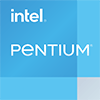
|
Intel Pentium N3700
4C 4T @ 2.40 GHz |
||
|
|
Intel Celeron J1900
4C 4T @ 2.42 GHz |
||

|
Intel Celeron N3160
4C 4T @ 2.24 GHz |
||
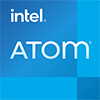
|
Intel Atom Z3795
4C 4T @ 2.39 GHz |
||

|
Intel Pentium E2140
2C 2T @ 1.60 GHz |
||
Geekbench 5, 64bit (Multi-Core)
Geekbench 5 is a cross plattform benchmark that heavily uses the systems memory. A fast memory will push the result a lot. The multi-core test involves all CPU cores and taks a big advantage of hyperthreading.

|
AMD Athlon II X2 255
2C 2T @ 3.10 GHz |
||

|
Intel Core i3-3217UE
2C 4T @ 1.60 GHz |
||

|
Intel Pentium 2127U
2C 2T @ 1.90 GHz |
||
|
|
Intel Celeron J1900
4C 4T @ 2.42 GHz |
||

|
MediaTek Helio G80
8C 8T @ 2.00 GHz |
||
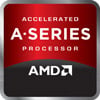
|
AMD A8-5545M
4C 4T @ 2.70 GHz |
||

|
Intel Core i3-4158U
2C 4T @ 2.00 GHz |
||
Geekbench 6 (Single-Core)
Geekbench 6 is a benchmark for modern computers, notebooks and smartphones. What is new is an optimized utilization of newer CPU architectures, e.g. based on the big.LITTLE concept and combining CPU cores of different sizes. The single-core benchmark only evaluates the performance of the fastest CPU core, the number of CPU cores in a processor is irrelevant here.

|
Intel Celeron N2830
2C 2T @ 2.41 GHz |
||

|
Intel Atom x7-Z8700
4C 4T @ 2.40 GHz |
||

|
Intel Pentium N3700
4C 4T @ 2.40 GHz |
||
|
|
Intel Celeron J1900
4C 4T @ 2.42 GHz |
||

|
Intel Celeron N2820
2C 2T @ 2.39 GHz |
||

|
Intel Atom x5-Z8500
4C 4T @ 2.24 GHz |
||

|
Intel Pentium N3520
4C 4T @ 2.42 GHz |
||
Geekbench 6 (Multi-Core)
Geekbench 6 is a benchmark for modern computers, notebooks and smartphones. What is new is an optimized utilization of newer CPU architectures, e.g. based on the big.LITTLE concept and combining CPU cores of different sizes. The multi-core benchmark evaluates the performance of all of the processor's CPU cores. Virtual thread improvements such as AMD SMT or Intel's Hyper-Threading have a positive impact on the benchmark result.
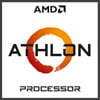
|
AMD Athlon 5150
4C 4T @ 1.60 GHz |
||

|
Intel Pentium J2900
4C 4T @ 2.67 GHz |
||

|
Intel Atom x5-Z8550
4C 4T @ 2.40 GHz |
||
|
|
Intel Celeron J1900
4C 4T @ 2.42 GHz |
||

|
AMD GX-415GA
4C 4T @ 1.50 GHz |
||

|
Intel Pentium N3700
4C 4T @ 2.40 GHz |
||

|
Intel Pentium 2117U
2C 2T @ 1.80 GHz |
||
Cinebench R20 (Single-Core)
Cinebench R20 is the successor of Cinebench R15 and is also based on the Cinema 4 Suite. Cinema 4 is a worldwide used software to create 3D forms. The single-core test only uses one CPU core, the amount of cores or hyperthreading ability doesn't count.

|
AMD Athlon 5150
4C 4T @ 1.60 GHz |
||

|
Intel Pentium N3710
4C 4T @ 2.56 GHz |
||

|
Intel Pentium D 915
2C 2T @ 2.80 GHz |
||
|
|
Intel Celeron J1900
4C 4T @ 2.42 GHz |
||

|
Intel Celeron N2930
4C 4T @ 2.16 GHz |
||

|
Intel Celeron N2920
4C 4T @ 2.00 GHz |
||

|
AMD E-350
2C 2T @ 1.60 GHz |
||
Cinebench R20 (Multi-Core)
Cinebench R20 is the successor of Cinebench R15 and is also based on the Cinema 4 Suite. Cinema 4 is a worldwide used software to create 3D forms. The multi-core test involves all CPU cores and taks a big advantage of hyperthreading.

|
Intel Celeron N4500
2C 2T @ 2.40 GHz |
||

|
AMD A10-7350B
4C 4T @ 2.70 GHz |
||

|
AMD Athlon 5350
4C 4T @ 2.05 GHz |
||
|
|
Intel Celeron J1900
4C 4T @ 2.42 GHz |
||

|
AMD A8-4500M
4C 4T @ 2.80 GHz |
||

|
AMD A9-9425
2C 2T @ 3.10 GHz |
||

|
Intel Core m3-6Y30
2C 4T @ 1.80 GHz |
||
iGPU - FP32 Performance (Single-precision GFLOPS)
The theoretical computing performance of the internal graphics unit of the processor with simple accuracy (32 bit) in GFLOPS. GFLOPS indicates how many billion floating point operations the iGPU can perform per second.

|
Intel Pentium J2900
Intel HD Graphics (Bay Trail GT1) @ 0.90 GHz |
||

|
Intel Pentium N3530
Intel HD Graphics (Bay Trail GT1) @ 0.90 GHz |
||

|
Intel Pentium N3540
Intel HD Graphics (Bay Trail GT1) @ 0.90 GHz |
||
|
|
Intel Celeron J1900
Intel HD Graphics (Bay Trail GT1) @ 0.85 GHz |
||

|
Intel Pentium J2850
Intel HD Graphics (Bay Trail GT1) @ 0.85 GHz |
||

|
Intel Celeron N2940
Intel HD Graphics (Bay Trail GT1) @ 0.85 GHz |
||

|
Intel Celeron N2930
Intel HD Graphics (Bay Trail GT1) @ 0.85 GHz |
||
Estimated results for PassMark CPU Mark
Some of the CPUs listed below have been benchmarked by CPU-monkey. However the majority of CPUs have not been tested and the results have been estimated by a CPU-monkey’s secret proprietary formula. As such they do not accurately reflect the actual Passmark CPU mark values and are not endorsed by PassMark Software Pty Ltd.
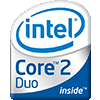
|
Intel Core2 Duo E7600
2C 2T @ 3.06 GHz |
||

|
AMD Athlon II X2 250
2C 2T @ 3.00 GHz |
||

|
Intel Celeron 3215U
2C 2T @ 1.70 GHz |
||
|
|
Intel Celeron J1900
4C 4T @ 2.42 GHz |
||

|
Intel Pentium N3520
4C 4T @ 2.42 GHz |
||

|
Intel Core2 Duo E6850
2C 2T @ 3.00 GHz |
||

|
AMD Athlon II X2 250e
2C 2T @ 3.00 GHz |
||
Cinebench R15 (Single-Core)
Cinebench R15 is the successor of Cinebench 11.5 and is also based on the Cinema 4 Suite. Cinema 4 is a worldwide used software to create 3D forms. The single-core test only uses one CPU core, the amount of cores or hyperthreading ability doesn't count.

|
Intel Atom x7-Z8700
4C 4T @ 2.40 GHz |
||

|
Intel Pentium N3530
4C 4T @ 2.58 GHz |
||

|
Intel Pentium N3700
4C 4T @ 2.40 GHz |
||
|
|
Intel Celeron J1900
4C 4T @ 2.42 GHz |
||

|
Intel Celeron J1750
2C 2T @ 2.41 GHz |
||

|
Intel Celeron N2830
2C 2T @ 2.41 GHz |
||

|
Intel Pentium N3510
4C 4T @ 2.40 GHz |
||
Cinebench R15 (Multi-Core)
Cinebench R15 is the successor of Cinebench 11.5 and is also based on the Cinema 4 Suite. Cinema 4 is a worldwide used software to create 3D forms. The multi-core test involves all CPU cores and taks a big advantage of hyperthreading.

|
Intel Celeron 3765U
2C 2T @ 1.90 GHz |
||

|
Intel Pentium 3805U
2C 2T @ 1.90 GHz |
||

|
Intel Pentium N3530
4C 4T @ 2.58 GHz |
||
|
|
Intel Celeron J1900
4C 4T @ 2.42 GHz |
||

|
AMD Athlon II X2 370K
2C 2T @ 4.20 GHz |
||

|
AMD A8-7100
4C 4T @ 2.40 GHz |
||

|
Intel Atom x5-Z8550
4C 4T @ 2.40 GHz |
||
Benchmarks

Geekbench 5 (SC)
2,488 entries
2,488 entries

Geekbench 5 (MC)
2,461 entries
2,461 entries

Geekbench 6 (SC)
1,755 entries
1,755 entries

Geekbench 6 (MC)
1,703 entries
1,703 entries

Cinebench R20 (SC)
656 entries
656 entries

Cinebench R20 (MC)
604 entries
604 entries

FP32 SP (iGPU)
2,042 entries
2,042 entries
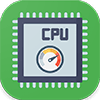
PassMark CPU-Mark
2,392 entries
2,392 entries

Cinebench R15 (SC)
1,106 entries
1,106 entries

Cinebench R15 (MC)
1,101 entries
1,101 entries

Geekbench 3 (SC)
942 entries
942 entries

Geekbench 3 (MC)
938 entries
938 entries

Cinebench R11.5 (SC)
825 entries
825 entries

Cinebench R11.5 (MC)
836 entries
836 entries

Cinebench R11.5 iGPU
383 entries
383 entries
Description of the processor
The Intel Celeron J1900 is a square processor from the Bay Trail architecture of Intels Celeron processors. By default, it clocks 2.00 Gigahertz and increases up to 2.42 Gigahertz in turbomodus. It does not matter if only one or equal to all 4 cores are used.The Intel Celeron J1900 does not support hyperthreading nor it is possible to overclock the processor. The Intel Celeron J1900 is manufactured in 22 nanometer driving and has a 2 megabyte L3 cache.
The Intel Celeron J1900 is intended for small, rather low-performance mobile devices to which no high standards are made. Larger computing power are simply not expected from the small CPU.
For this, the Intel Celeron J1900, which has a very low TDP (Thermal Design Power) of only 10 watts, is very economical in energy consumption. This makes him interesting for self-built NAS systems that simply deploy data and do not want to perform large arithmetic operations.
The simple graphics unit "Intel HD Graphics" has only 4 execution units and clocks in the base of 0.69 Gigahertz and can increase in turbomodus to 0.85 gigahertz. The graphics unit supports the control of up to 2 monitors.
The main memory uses DDR3L-SO-DIMM modules with up to 1333 Megahertz. The "L" in the name of the memory is "low" and refers to the voltage of the memory that is not, as with normal DDR3 SO-DIMM modules, at 1.5 volts but only 1.35 volts. This then affects power consumption and is reflected in lower power consumption.
PCI Express is available in version 2, but merely with 2 lines.
The releasedatum of the Intel Celeron J1900 was in the fourth quarter of 2013.
Popular comparisons
back to index




